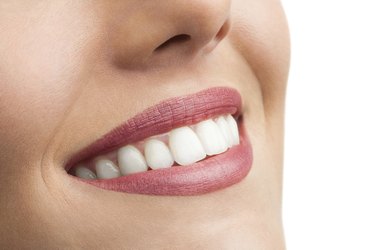
Zinc is an essential trace element that is vital for many biological processes in the body. Zinc deficiencies can lead to symptoms affecting many different parts of the body, including the skin. One possible symptom of a zinc deficiency is a skin condition known as perioral dermatitis. If you have perioral dermatitis and suspect it may be related to a zinc deficiency, consult your doctor to confirm the diagnosis and receive treatment options.
Perioral Dermatitis
Video of the Day
Perioral dermatitis is an uncomfortable skin condition that results in a painful burning sensation in the perioral area, which is the area around the mouth. Unlike other types of dermatitis, perioral dermatitis rarely causes an itching sensation; the most common sensation is burning, reports MedlinePlus. Many cases of perioral dermatitis are characterized by red bumps or pustules, which often appear very similar in appearance to acne.
Video of the Day
Causes
The exact cause of perioral dermatitis is unknown, although women appear more likely to develop perioral dermatitis than do men. One common trigger of perioral dermatitis is skin cream containing steroids that is used to treat other skin conditions of the face, explains MedlinePlus. In certain cases, the rash may spread from around the mouth to the nose, eyes or forehead.
Zinc Deficiency
Another possible trigger of perioral dermatitis is zinc deficiency. Cases of severe perioral dermatitis have been linked to zinc deficiency resulting from alcoholism and anorexia, reports a study published in the medical journal "Clinical and Experimental Dermatology." Even when systemic levels of zinc throughout the body are normal, there is growing evidence that local patches of skin may become zinc deficient, which can contribute to skin conditions such as perioral dermatitis, explains an article published in 2006 in the "Journal of Dermatological Treatment."
Mechanism
Zinc is required for the efficient activity of numerous biochemical reactions within cells, particularly the reactions involved in cell growth and reproduction. Because skin cells are constantly growing and reproducing to replace dead layers of skin, skin cells require relatively high amounts of zinc. When a zinc deficiency occurs, the cells of the skin may be affected early in the deficiency, resulting in skin conditions such as perioral dermatitis, an article in the July 2005 issue of the journal "Dermatologic Surgery" explains.
- "Journal of Dermatological Treatment"; Zinc in Skin Pathology and Care; Y. Bibi Nitzan and A.D. Cohen; 2006
- "Clinical and Experimental Dermatology"; Malnutrition and a Rash: Think Zinc; C.M. Roberts, et al.; November 2007
- "Dermatologic Surgery"; Zinc and Skin Health: Overview of Physiology and Pharmacology; J.R. Schwartz, et al.; July 2005
- Linus Pauling Institute at Oregon State University; Zinc; Jane Higdon, et al.; February 2008
- MedlinePlus; Perioral Dermatitis; Michael Lehrer, et al.; December 2009